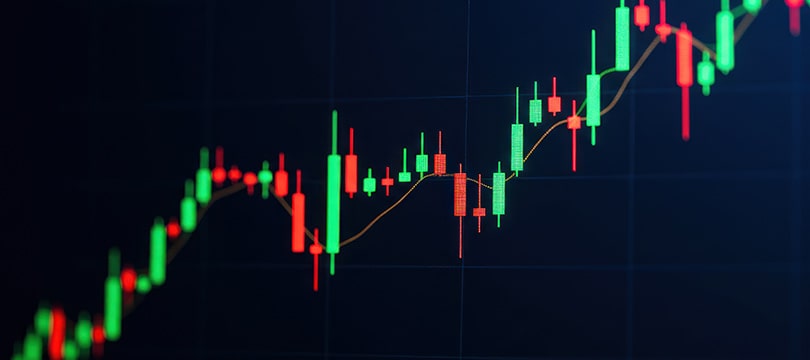What are moving averages and how do they work
Moving averages are statistical tools used to analyze series of sequential data, such as closing prices of a stock or an asset over time. Moving averages, in trading, are used to reduce the impact of short-term price fluctuations on technical analysis and reveal the general direction of prices. A moving average is simply the arithmetic mean of a certain number of past data points. From a trading perspective, when we talk about a "50-day moving average," we refer to the average of the last 50 closing prices of a particular stock. With each passing day, the oldest data point is discarded, and the newest data point is added, hence the term "moving."The various types of moving averages
There are several types of moving averages, which differ in their calculation methods.- Simple Moving Average (SMA). This is the simple arithmetic mean of prices over a given period. For example, a 10-day SMA sums the last 10 closing prices and divides them by 10.
- Exponential Moving Average (EMA). This type assigns greater weight to more recent prices, making it more responsive to recent price changes compared to the SMA. The formula for calculating it is more complex and takes into account the previous day's EMA.
- Weighted Moving Average (WMA). Similar to the EMA, the WMA also assigns more weight to recent data. However, the weighting decreases linearly rather than exponentially.
- Triangular Moving Average. This is an average of an average, used to smooth data and make it more fluid. This type of moving average centers the data rather than leading or lagging it.
How to use moving averages
Moving averages are extremely versatile and can be used in multiple ways to identify trends, resistances, supports, and trading signals. Here are some key strategies.- Trend identification. When the price is above the moving average, it derives a bullish signal, while if it is below, it derives a bearish signal.
- Moving average crossovers. Widely used by traders, moving average crossovers occur when a short-term moving average (e.g., 10-day SMA) crosses a long-term one (e.g., 50-day SMA). An upward crossover may signal a possible start of an uptrend, while a downward crossover could indicate a potential downtrend.
- Entry and exit points. Moving averages can help identify possible entry and exit points. For example, when the price breaks above a resistant moving average after a downtrend, it could signal a good entry point for a long position. Similarly, a break below could suggest an exit or entry into a short position.
- Support and resistance. Prices often tend to bounce on or around moving averages, which can act as support or resistance levels. If a price repeatedly moves towards a moving average and bounces, that moving average could be considered a support level.
The risks of moving averages
Although moving averages are one of the most used and appreciated tools in the world of trading, improper use can lead to misinterpretations and unwise decisions. Here are some of the most common mistakes in using moving averages.- Over-reliance on averages. Some traders, especially less experienced ones, tend to base their entire strategy on moving average crossovers, ignoring other important indicators. This can lead to false signals, especially in sideways markets where moving averages lose effectiveness.
- Choosing inappropriate periods. The choice of the moving average period (e.g., 10 days, 50 days, 200 days) is crucial. Too short a period might produce too many signals, making interpretation difficult, while too long a period might not capture trend changes in time.
- Signal delay. Moving averages are lagging indicators and, by nature, have a delay compared to actual price movements. Relying solely on averages to enter or exit the market could mean missing part of the move.
- Ignoring fundamentals. Moving averages focus on past price data. At the same time, they do not account for news or fundamental events that could influence the market. Therefore, ignoring macroeconomic events or corporate news is always risky.




